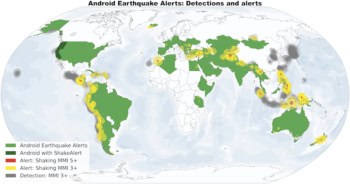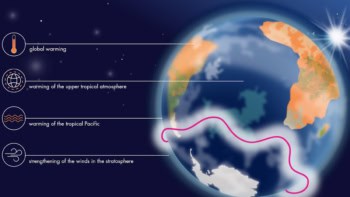
To most people “geothermal electricity” conjures up images of a steam-enshrouded facility in a place like Iceland where heat from the depths of the Earth comes to the surface.
But some geologists – including UK-based Ryan Law – are championing a technology that could generate large amounts of geothermal electricity in places that are thousands of kilometres away from such geological features. The scheme for generating electricity from the heat of radioactive rocks deep underground goes by several names, including “deep geothermal”, “hot dry rocks” and “engineered geothermal systems” (EGS).
Law is managing director of UK-based Geothermal Engineering, which next year plans to drill about 5 km down near the town of Redruth in Cornwall. The company intends to pump water to the rocks, where it will heat up before returning to the surface at around 200 °C, and under pressure. The hot water will be run through a heat exchanger to drive a steam turbine, providing 10 MW of electricity to the grid. The water will then be returned underground for reheating in a closed loop.
According to Geothermal Engineering, that’s enough electricity to supply about 20,000 homes and the project will also provide heat to the local community. The project will provide continuous carbon-free energy, unlike other renewable sources such as wind and solar, which are intermittent. But unlike conventional technologies, EGS can be deployed “almost anywhere,” says Law, adding “You can access a much greater resource.” For Law, the resource is hot granite that sits underneath Cornwall and nearby Devon – two counties in the south-west corner of England.
Hot granite
The Redruth granite is hot because it is full of radioactive uranium, potassium and thorium. “Cornish granites are known for having a high concentration of these elements, therefore they have a measurably higher heat flow compared to other granites,” says Law. Drawing on the UK government’s 1976–1990 Hot Dry Rocks research project in nearby Rosemanowes, Law says that the energy flux in the rock is 135 milliwatts per square metre – high for granite – and the rock is at a temperature of about 200 °C.
In August the firm won planning permission for the project, which it hopes to operate commercially by 2014. It also has plans for another 25 plants across Devon and Cornwall. Another UK company, EGS Energy, is seeking planning permission to build a 4 MW facility at Cornwall’s Eden Project.
Success in Cornwall could boost similar projects elsewhere in the world where granite or other heat sources – different types of rocks or pools of water – exist. A small 3 MW plant already operates in Landau, Germany. The EU is testing another in Soultz, France. An Australian company, Geodynamics, plans up to 90 EGS sites in Australia.
Lack of investment
EGS is not new but its development has suffered from a lack of private investment. “I’ve always been enthusiastic about it as an energy resource,” says Allan Hoffman, a senior analyst with the US Department of Energy’s Office of Energy Efficiency and Renewable Energy. Hoffman once halted a hot dry rocks project at Los Alamos National Laboratory in New Mexico in the 1990s. “Not because it didn’t work,” he says. “But I wanted the private sector to come up with some of the money.” It didn’t.
With world interest growing in renewable energy, funding might pick up. A 2006 report by the Massachusetts Institute of Technology noted that the US has enough geothermal heat to theoretically meet 2000 times its primary energy needs, and that EGS could realistically supply 10% of its electricity by 2050.
“The good news is you don’t need new technologies,” says Jefferson Tester, the report’s lead author and now the associate director for energy at Cornell University’s Center for a Sustainable Future. “But it isn’t cheap to drill.”
Law hopes to raise £12.5 million to start his first phase, and will need another £30 million for the second. Like any such project, he can’t be sure that he’ll find his hot granite until he gets to it. Geothermal firm AltaRock Energy abandoned a job in California last year after finding what it called “geological anomalies.”
Thousands of tiny tremors
Law is confident he’ll avoid a similar fate because he’s going through loose rock. That will ease drilling and make it easier to pump water through, as will the high heat. That, in turn, reduces the threat of “earthquakes”. A project in Switzerland closed in 2006 after a small tremor.
Law acknowledges that drilling can trigger thousands of “micro seismic events,” but says that’s little different from oil and gas drilling. And he notes that they help decipher underground structures. “Most of these events are smaller than a horse walking next to you. You never feel them. But there are thousands of them, picked up by seismometers. We use the data to map a 3D picture.”
Tester concurs. “They give you just the information you need,” he says. “We like to call them acoustic emissions.”



